Skateboard culture, Technology
Electric Skateboard: Everything you need to know
An electric skateboard, also known as an e-board, is nothing more than what the term implies: a means of transportation on a skateboard, deck, or skateboard (depending on where you are). Depending on the model, speed is controlled either through a wireless remote control or a weight sensor. And the steering? Just like a traditional skateboard, it’s controlled by the movement of your shoulders, hips, and legs.
History of the Electric Skateboard
The origin of the first self-propelled skateboard can be traced back to the Motoboard, a gasoline-powered skateboard launched in 1975, which was coincidentally banned in California in 1997 due to environmental and noise pollution. This paved the way for the natural evolution of the electric skateboard. The first one is attributed to a certain Louie Finkle, the pioneer who introduced a wireless electric skateboard in 1997. However, it wasn’t until 2005 that the motors and batteries of electric skateboards started to improve, achieving acceptable acceleration and duration. In the last decade, numerous crowdfunding projects (Kickstarter, Indiegogo) have allowed this fantastic mode of transportation and leisure to evolve thanks to innovation and collaborative support.
Design of the Electric Skateboard
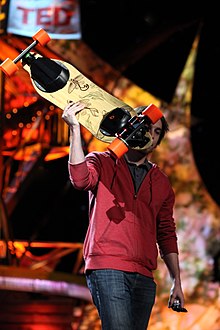 The design of modern electric skateboards has evolved significantly as technological advancements have allowed it. Batteries, for example, have dictated the shape of boards in many models up to now. Since the range and speed they offer are influenced by power, size, and the number of cells, many manufacturers have been forced to release electric skateboards in a longboard version. Longer boards could accommodate more battery cells, further increasing the weight. It wasn’t uncommon to find electric skateboards weighing up to 15kg in the early days. Nowadays, we have a new generation of models on the market that, thanks to manufacturing technology, material composition, and battery advancements, can offer penny-sized electric skateboards weighing as little as 3kg. Many of the models available in large stores are inexpensive “toys” that also come with low quality. When riding an electric skateboard, we reach speeds that we are not normally accustomed to on a skateboard. If we also ride a board that is too small, it will be more difficult to control and skate stably. The key is to find a balanced blend of stability, comfort, and power, which is typically achieved with boards around 60cm in length for short decks or 90cm for longboards, with the maximum possible wheelbase separation.
The design of modern electric skateboards has evolved significantly as technological advancements have allowed it. Batteries, for example, have dictated the shape of boards in many models up to now. Since the range and speed they offer are influenced by power, size, and the number of cells, many manufacturers have been forced to release electric skateboards in a longboard version. Longer boards could accommodate more battery cells, further increasing the weight. It wasn’t uncommon to find electric skateboards weighing up to 15kg in the early days. Nowadays, we have a new generation of models on the market that, thanks to manufacturing technology, material composition, and battery advancements, can offer penny-sized electric skateboards weighing as little as 3kg. Many of the models available in large stores are inexpensive “toys” that also come with low quality. When riding an electric skateboard, we reach speeds that we are not normally accustomed to on a skateboard. If we also ride a board that is too small, it will be more difficult to control and skate stably. The key is to find a balanced blend of stability, comfort, and power, which is typically achieved with boards around 60cm in length for short decks or 90cm for longboards, with the maximum possible wheelbase separation.
The first electric skateboards were designed to ride on the same surfaces as cars. Some riders primarily used them for transportation, while others leaned towards cruising or sports activities. New models and designs have covered the niche of those seeking adrenaline with off-road models. These boards are longer with larger wheels, allowing us to ride on grass, gravel, dust, and even hard sand. 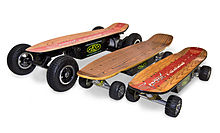
Most electric skateboards are controlled with a handheld remote. Accelerating is as simple as squeezing a trigger, moving a mini joystick, or turning a small wheel. Most of these remotes also allow for braking and even reversing the direction of travel.
There has also been a significant change in board composition, from laminated maple wood, later covered with fiberglass, to bamboo, and most recently, carbon fiber. In our article explaining how to choose your electric skateboard, there is a section on board composition.
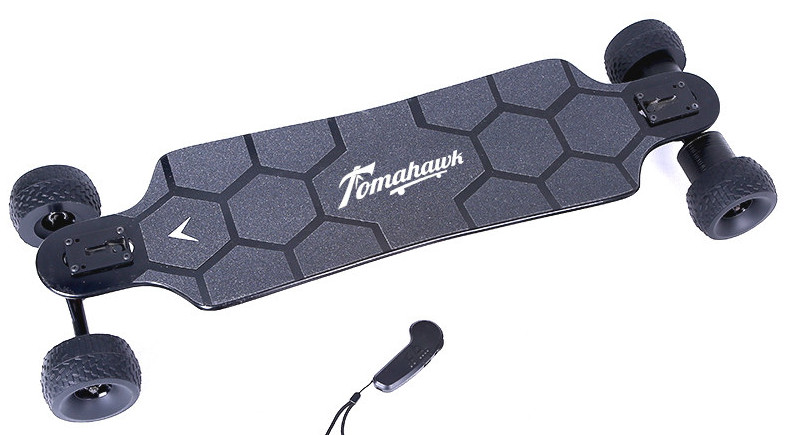
Engines
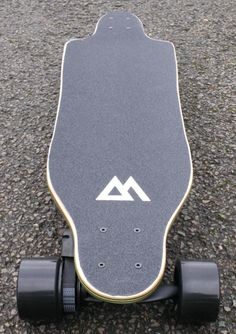 Electric skateboards come with configurations of one, two, and four motors. In the early models, motors transferred power to the wheels through a toothed belt. Lately, there has been a trend towards the use of hub motors thanks to the development of hub motors that use a permanent magnet motor (brushless motor) integrated into the wheel.
Electric skateboards come with configurations of one, two, and four motors. In the early models, motors transferred power to the wheels through a toothed belt. Lately, there has been a trend towards the use of hub motors thanks to the development of hub motors that use a permanent magnet motor (brushless motor) integrated into the wheel.
Although belt-driven motors have been around longer and offered good acceleration, they are noisier, deliver power less directly, and pose more maintenance and non-electric sliding issues compared to the new motors inside the wheels.
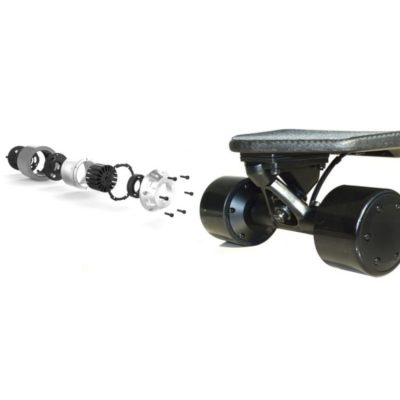 In these new models, there is hardly any friction when riding without power. If you run out of battery after a few hours of use, you can easily return to skating like a traditional skateboard. If you want to learn more about electric motors for skateboarding, we recommend reading the article on what makes an electric motor exceptional.
In these new models, there is hardly any friction when riding without power. If you run out of battery after a few hours of use, you can easily return to skating like a traditional skateboard. If you want to learn more about electric motors for skateboarding, we recommend reading the article on what makes an electric motor exceptional.
We hope this brief guide on the history of the electric skateboard has been helpful. You can leave your comments below or contact Tomahawk Skateboards for any questions. We’ll be happy to hear from you.

